How To Find X Intercept In A Quadratic Equation
How to Find the X-Intercepts and Y-Intercepts
The X-Intercepts
The x-intercepts are points where the graph of a function or an equation crosses or "touches" the x-axis of the Cartesian Airplane. You may think of this as a point with y-value of zero.
- To observe the ten-intercepts of an equation, allow y = 0 and so solve for x.
- In a point note, it is written equally \left( {x,0} \right).
x-intercept of a Linear Part or a Directly Line
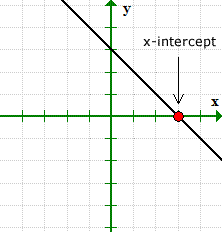
x-intercepts of a Quadratic Part or Parabola
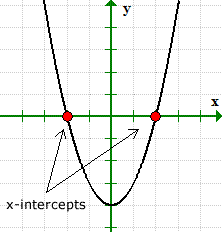
The Y-Intercepts
The y-intercepts are points where the graph of a function or an equation crosses or "touches" the y-axis of the Cartesian Aeroplane. You lot may think of this as a point with x-value of zero.
- To find the y-intercepts of an equation, let ten = 0 then solve for y.
- In a point notation, it is written as \left( {0,y} \right).
y-intercept of a Linear Office or a Straight Line
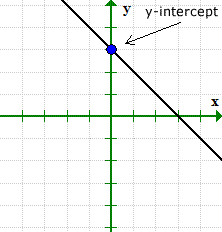
y-intercept of a Quadratic Function or Parabola
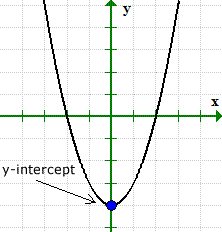
Examples of How to Find the x and y-intercepts of a Line, Parabola, and Circumvolve
Example 1: From the graph, describe the 10 and y-intercepts using signal notation.

The graph crosses the ten-centrality at x= i and x= 3, therefore, nosotros can write the x-intercepts every bit points (1,0) and (–3, 0).
Similarly, the graph crosses the y-axis at y=3. Its y-intercept can be written every bit the point (0,iii).
Case 2: Find the x and y-intercepts of the line y = - 2x + 4.
To observe the x-intercepts algebraically, we allow y=0 in the equation and then solve for values of x. In the same mode, to notice for y-intercepts algebraically, we permit x=0 in the equation and then solve for y.

Here's the graph to verify that our answers are correct.
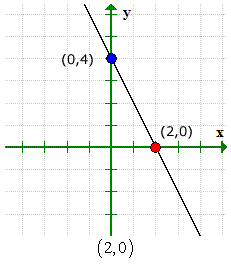
Example 3: Discover the x and y-intercepts of the quadratic equation y = {ten^two} - 2x - iii.
The graph of this quadratic equation is a parabola. We wait information technology to take a "U" shape where it would either open or down.
To solve for the x-intercept of this problem, you will factor a simple trinomial. Then you set each binomial factor equal to nothing and solve for ten.

Our solved values for both x and y-intercepts match with the graphical solution.
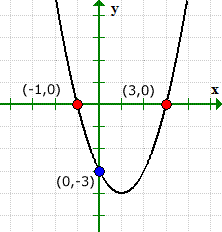
Instance four: Observe the x and y-intercepts of the quadratic equation y = 3{x^2} + 1.
This is an example where the graph of the equation has a y-intercept but without an x-intercept.
- Allow'south find the y-intercept first because it's extremely like shooting fish in a barrel! Plug in ten = 0 then solve for y.

- Now for the x-intercept. Plug in y = 0, and solve for x.
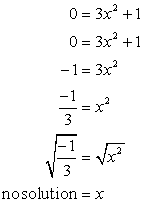
The foursquare root of a negative number is imaginary. This suggests that this equation does not have an ten-intercept!
The graph can verify what'due south going on. Notice that the graph crossed the y-centrality at (0,i), just never did with the x-axis.
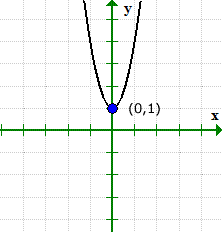
Example 5: Discover the 10 and y intercepts of the circumvolve {\left( {10 + 4} \right)^two} + {\left( {y + ii} \right)^2} = viii.
This is a proficient example to illustrate that information technology is possible for the graph of an equation to have x-intercepts but without y-intercepts.

When solving for y, we arrived at the situation of trying to get the square root of a negative number. The reply is imaginary, thus, no solution. That means the equation doesn't take whatever y-intercepts.
The graph verifies that we are right for the values of our x-intercepts, and information technology has no y-intercepts.
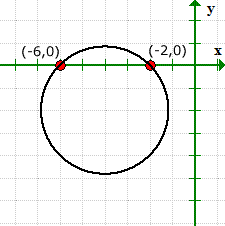
Source: https://www.chilimath.com/lessons/intermediate-algebra/finding-x-y-intercepts/
Posted by: coatesperis1986.blogspot.com

0 Response to "How To Find X Intercept In A Quadratic Equation"
Post a Comment